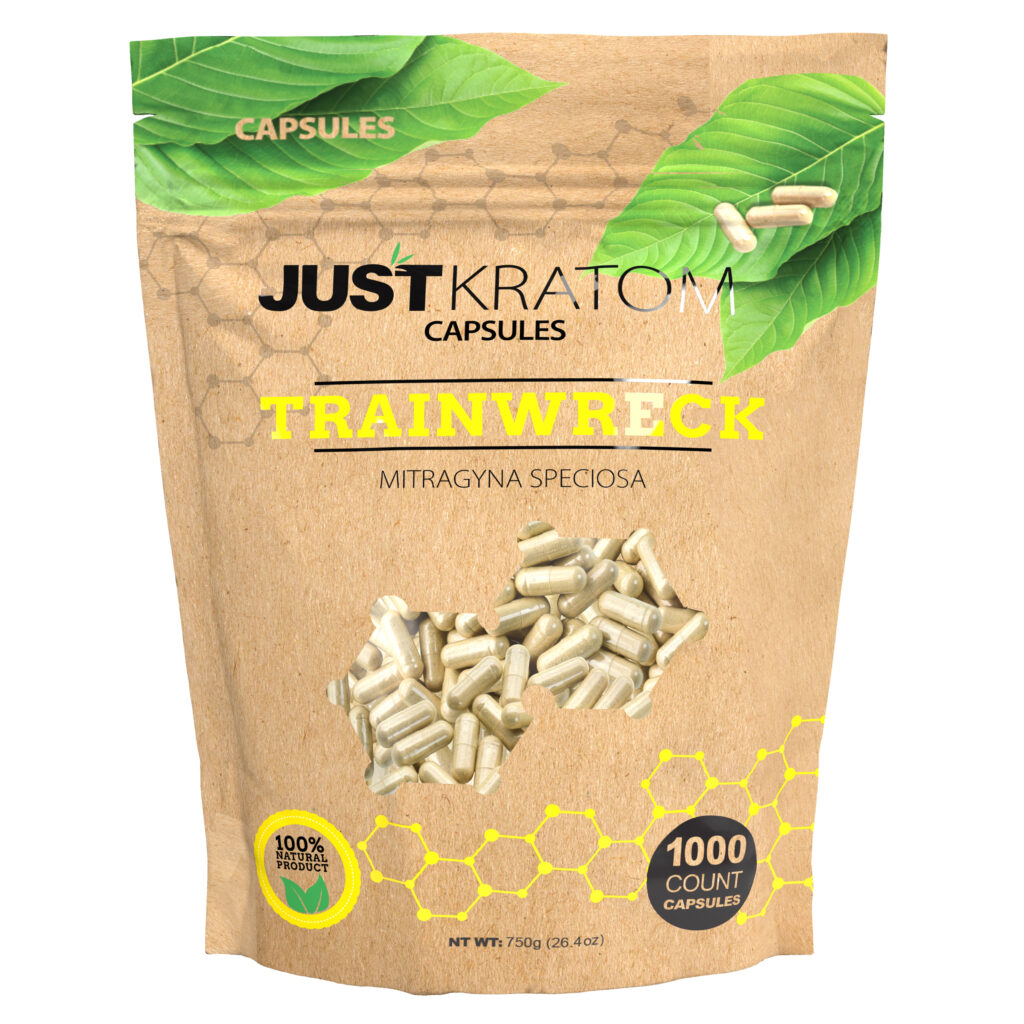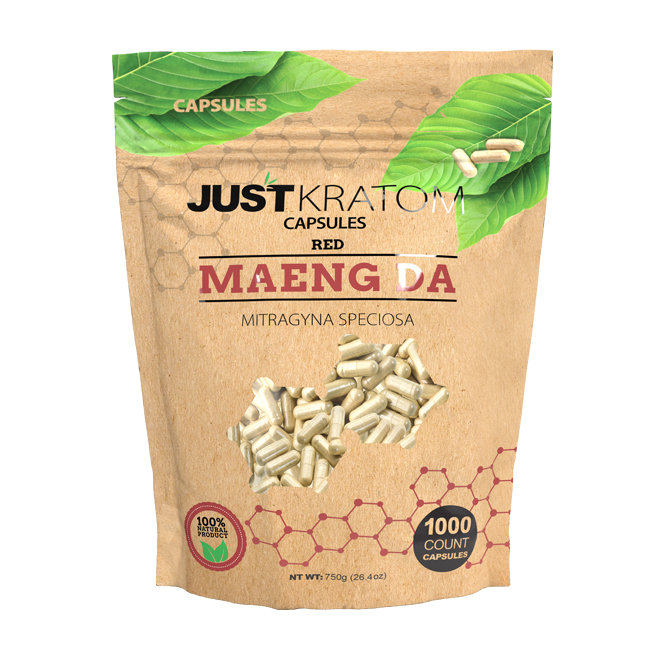The Definition of Addiction
Addiction is a complex condition characterized by compulsive drug seeking and use despite harmful consequences.
- It involves changes in brain structure and function, leading to an intense craving for the substance.
- Addictive behaviors often become prioritized over other aspects of life, such as relationships, work, and health.
- Withdrawal symptoms, both physical and psychological, occur when drug use is stopped.
Kratom and its Effects on the Brain
Kratom (Mitragyna speciosa) is a tropical evergreen tree native to Southeast Asia. Its leaves contain psychoactive alkaloids, notably mitragynine and 7-hydroxymitragynine, which produce effects ranging from stimulation to sedation depending on the dose.
Concerns have been raised about the potential for kratom to be addictive. Here’s a breakdown of the facts surrounding kratom addiction:
- Kratom does contain alkaloids that can interact with opioid receptors in the brain, which are also targeted by drugs like heroin and morphine.
- While there is evidence suggesting potential for dependence and withdrawal symptoms associated with kratom use, the severity and frequency of these experiences appear to be less compared to traditional opioids.
- Studies on kratom addiction are limited, and more research is needed to fully understand its long-term effects and addictive potential.
Withdrawal Symptoms Associated with Kratom Use
Withdrawal symptoms associated with kratom use can vary in severity from person to person. Common symptoms may include:
Irritability, anxiety, restlessness, muscle aches, joint pain, fatigue, insomnia, increased sweating, nausea, and diarrhea.
These symptoms typically begin within 24 hours of the last kratom intake and can last for several days to a week. In some cases, withdrawal can be more severe and may require medical supervision.
Factors Influencing Kratom’s Addictive Potential
Determining whether kratom is addictive is complex due to multiple factors influencing its potential for misuse and dependence. These factors encompass individual differences in metabolism, genetics, personal history with substance use, dosage patterns, and the presence of underlying mental health conditions. Understanding these influences is crucial for accurately assessing kratom’s addictive potential.
Dosage and Frequency of Use
Factors that influence the addictive potential of kratom include:
- Dosage and Frequency of Use
- Individual susceptibility: Genetics, personal history with substance use, and pre-existing mental health conditions can play a role.
- Method of Consumption: Certain methods of consumption might increase the risk of dependence compared to others.
- Social and Environmental Factors: Stress, social isolation, and peer pressure can contribute to kratom misuse.
It is important to note that kratom’s addictive potential is not fully understood. While there is evidence suggesting the possibility of dependence, research is ongoing. If you are concerned about your kratom use or think you may be developing a problem, it is essential to seek professional help.

Individual Predisposition
Factors influencing kratom’s addictive potential vary greatly from person to person. Genetics and personal history with substance use play a significant role in an individual’s susceptibility to addiction. Those with a family history of addiction or previous experiences with drug dependence may be more prone to developing problems with kratom.
Dosage and frequency of use also contribute to the risk of addiction. Higher doses and frequent consumption can increase the likelihood of dependence.
The method of consumption can influence addictive potential. Certain methods, such as smoking or intravenous injection, may lead to faster absorption and potentially higher rates of dependence compared to other methods like chewing leaves.
Social and environmental factors can also contribute to kratom misuse. Stressful life events, social isolation, and peer pressure can increase the risk of developing problematic use patterns.
Genetics and Mental Health Conditions
Understanding the addictive potential of kratom is complex as multiple factors intertwine to influence an individual’s susceptibility to dependence. Genetic predisposition plays a role, with individuals carrying certain genes potentially more vulnerable to addiction regardless of the substance.
Mental health conditions can also significantly increase the risk of kratom misuse and dependence. Individuals struggling with anxiety, depression, or other mental health challenges may turn to kratom as a way to self-medicate, leading to potential addiction.
Myth: Kratom is Less Addictive Than Other Drugs
While it is often claimed that kratom is less addictive than other drugs, this statement requires careful consideration.
Kratom’s potential for addiction is multifaceted and influenced by a combination of factors.
Although it shares some similarities with opioids in its interaction with opioid receptors, studies on kratom addiction are still limited.
More research is needed to definitively compare its addictive potential to other drugs.
Myth: Kratom Users Can Easily Stop Using it
Determining whether kratom is addictive is complex due to multiple factors influencing its potential for misuse and dependence. These factors encompass individual differences in metabolism, genetics, personal history with substance use, dosage patterns, and the presence of underlying mental health conditions. Understanding these influences is crucial for accurately assessing kratom’s addictive potential.
Factors that influence the addictive potential of kratom include:
- Dosage and Frequency of Use
- Individual susceptibility: Genetics, personal history with substance use, and pre-existing mental health conditions can play a role.
- Method of Consumption: Certain methods of consumption might increase the risk of dependence compared to others.
- Social and Environmental Factors: Stress, social isolation, and peer pressure can contribute to kratom misuse.
Facts About Kratom and Addiction
Kratom (Mitragyna speciosa) is a tropical plant native to Southeast Asia whose leaves contain psychoactive alkaloids that produce effects ranging from stimulation to sedation. Concerns have been raised about its potential for addiction, prompting investigation into the facts surrounding kratom use and dependence.
Evidence Supporting Kratom’s Potential for Addiction
Kratom does contain alkaloids that can interact with opioid receptors in the brain, which are also targeted by drugs like heroin and morphine.
While there is evidence suggesting potential for dependence and withdrawal symptoms associated with kratom use, the severity and frequency of these experiences appear to be less compared to traditional opioids.
Studies on kratom addiction are limited, and more research is needed to fully understand its long-term effects and addictive potential.
Determining whether kratom is addictive is complex due to multiple factors influencing its potential for misuse and dependence. These factors encompass individual differences in metabolism, genetics, personal history with substance use, dosage patterns, and the presence of underlying mental health conditions. Understanding these influences is crucial for accurately assessing kratom’s addictive potential.
Factors that influence the addictive potential of kratom include:
- Dosage and Frequency of Use
- Individual susceptibility: Genetics, personal history with substance use, and pre-existing mental health conditions can play a role.
- Method of Consumption: Certain methods of consumption might increase the risk of dependence compared to others.
- Social and Environmental Factors: Stress, social isolation, and peer pressure can contribute to kratom misuse.
It is important to note that kratom’s addictive potential is not fully understood. While there is evidence suggesting the possibility of dependence, research is ongoing. If you are concerned about your kratom use or think you may be developing a problem, it is essential to seek professional help.
The Role of Long-Term Use in Addiction Risk
Addiction is a complex condition characterized by compulsive drug seeking and use despite harmful consequences. It involves changes in brain structure and function, leading to an intense craving for the substance. Addictive behaviors often become prioritized over other aspects of life, such as relationships, work, and health. Withdrawal symptoms, both physical and psychological, occur when drug use is stopped.
Kratom (Mitragyna speciosa) is a tropical evergreen tree native to Southeast Asia. Its leaves contain psychoactive alkaloids, notably mitragynine and 7-hydroxymitragynine, which produce effects ranging from stimulation to sedation depending on the dose. Concerns have been raised about the potential for kratom to be addictive.
Kratom does contain alkaloids that can interact with opioid receptors in the brain, which are also targeted by drugs like heroin and morphine. While there is evidence suggesting potential for dependence and withdrawal symptoms associated with kratom use, the severity and frequency of these experiences appear to be less compared to traditional opioids.
Studies on kratom addiction are limited, and more research is needed to fully understand its long-term effects and addictive potential. Withdrawal symptoms associated with kratom use can vary in severity from person to person. Common symptoms may include irritability, anxiety, restlessness, muscle aches, joint pain, fatigue, insomnia, increased sweating, nausea, and diarrhea.
These symptoms typically begin within 24 hours of the last kratom intake and can last for several days to a week. In some cases, withdrawal can be more severe and may require medical supervision.
Determining whether kratom is addictive is complex due to multiple factors influencing its potential for misuse and dependence. These factors encompass individual differences in metabolism, genetics, personal history with substance use, dosage patterns, and the presence of underlying mental health conditions.
Factors that influence the addictive potential of kratom include dosage and frequency of use, individual susceptibility (genetics, personal history with substance use, and pre-existing mental health conditions), method of consumption (certain methods might increase the risk of dependence compared to others), and social and environmental factors (stress, social isolation, and peer pressure can contribute to kratom misuse).
It is important to note that kratom’s addictive potential is not fully understood. While there is evidence suggesting the possibility of dependence, research is ongoing. If you are concerned about your kratom use or think you may be developing a problem, it is essential to seek professional help.
Setting Realistic Usage Goals
Kratom (Mitragyna speciosa) is a tropical evergreen tree native to Southeast Asia. Its leaves contain psychoactive alkaloids that produce effects ranging from stimulation to sedation depending on the dose. Concerns have been raised about its potential for addiction, prompting investigation into the facts surrounding kratom use and dependence.
While kratom does contain alkaloids that interact with opioid receptors in the brain, studies on kratom addiction are still limited. More research is needed to fully understand its long-term effects and addictive potential.
If you’re considering using kratom, it’s important to understand the risks involved and set realistic usage goals. Here are some factors to consider:
- Start with a low dose and gradually increase it as needed. Don’t exceed recommended dosage guidelines.
- Limit your consumption to a few times per week at most. Frequent use increases the risk of dependence.
- Be aware of potential side effects. Kratom can cause nausea, constipation, dizziness, and anxiety in some people.

It’s also essential to be mindful of your overall health and any existing medical conditions before using kratom. Consult with a healthcare professional if you have concerns or are considering long-term use.
Monitoring Your Consumption Patterns
Kratom (Mitragyna speciosa) is a tropical evergreen tree native to Southeast Asia, whose leaves contain psychoactive alkaloids that produce effects ranging from stimulation to sedation depending on the dose. While kratom has gained popularity as an herbal remedy and alternative to opioid painkillers, concerns remain about its potential for addiction.
It’s important to understand that kratom does interact with opioid receptors in the brain, similar to drugs like heroin and morphine. This interaction can lead to a feeling of euphoria and pain relief, but it also increases the risk of dependence.

While some individuals may use kratom recreationally without developing problems, others may experience withdrawal symptoms when they stop using it. These symptoms can include irritability, anxiety, restlessness, muscle aches, joint pain, fatigue, insomnia, sweating, nausea, and diarrhea.
The severity of these withdrawal symptoms varies from person to person and depends on factors such as the amount and frequency of kratom used, individual sensitivity, and duration of use.
Monitoring your kratom consumption patterns is crucial for mitigating the risk of dependence. Here are some strategies to help you stay in control:
- Keep a log of your kratom use: This will help you track your intake, identify potential patterns of increased usage, and recognize warning signs early on.
- Set limits for yourself: Determine a specific amount you’ll consume per day or week and stick to it. Avoid exceeding these limits, even if you feel like you need more.
- Be mindful of your triggers: Identify situations or emotions that make you want to use kratom and develop healthy coping mechanisms to manage them without resorting to kratom.
- Seek support: Talking to friends, family, or a therapist can provide valuable support and accountability as you navigate your kratom use.
If you notice that your kratom consumption is increasing, causing problems in your life, or you’re experiencing withdrawal symptoms when trying to reduce your use, it’s essential to reach out for professional help. Addiction is a complex condition, and seeking guidance from a healthcare professional can be invaluable in addressing any potential issues.
Seeking Support When Needed
Kratom (Mitragyna speciosa) is a tropical evergreen tree native to Southeast Asia. Its leaves contain psychoactive alkaloids that produce effects ranging from stimulation to sedation depending on the dose. While kratom has gained popularity as an herbal remedy and alternative to opioid painkillers, concerns remain about its potential for addiction.
It’s important to understand that kratom does interact with opioid receptors in the brain, similar to drugs like heroin and morphine. This interaction can lead to a feeling of euphoria and pain relief, but it also increases the risk of dependence. While some individuals may use kratom recreationally without developing problems, others may experience withdrawal symptoms when they stop using it. These symptoms can include irritability, anxiety, restlessness, muscle aches, joint pain, fatigue, insomnia, sweating, nausea, and diarrhea.
The severity of these withdrawal symptoms varies from person to person and depends on factors such as the amount and frequency of kratom used, individual sensitivity, and duration of use. Monitoring your kratom consumption patterns is crucial for mitigating the risk of dependence. Here are some strategies to help you stay in control:
* **Keep a log of your kratom use:** This will help you track your intake, identify potential patterns of increased usage, and recognize warning signs early on.
* **Set limits for yourself:** Determine a specific amount you’ll consume per day or week and stick to it. Avoid exceeding these limits, even if you feel like you need more.
* **Be mindful of your triggers:** Identify situations or emotions that make you want to use kratom and develop healthy coping mechanisms to manage them without resorting to kratom.
* **Seek support:** Talking to friends, family, or a therapist can provide valuable support and accountability as you navigate your kratom use.
If you notice that your kratom consumption is increasing, causing problems in your life, or you’re experiencing withdrawal symptoms when trying to reduce your use, it’s essential to reach out for professional help. Addiction is a complex condition, and seeking guidance from a healthcare professional can be invaluable in addressing any potential issues.
Shop Kratom capsules for relaxation and focus
- Exosome Therapy For Skin Rejuvenation Near Horsell, Surrey - May 6, 2025
- Jaw Fillers For A Defined Jawline Near Ash, Surrey - May 5, 2025
- Anti-Wrinkle Treatments Near Churt, Surrey - May 4, 2025
